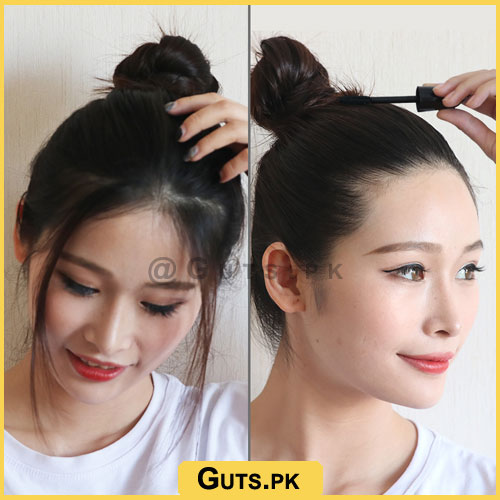- Online Shopping in Pakistan
- 0319-123-3215
- [email protected]
What is Acrylic Sheet & its characteristics and Scope of Application

What is Acrylic Sheet
Sheet acrylic and its main types
You can often see such a phrase as “sheet acrylic”. Now we will consider it as a structural material and find out what it is and where it is used.
Sheet acrylic is nothing but plexiglass. However, in fact, acrylic is a colloquial name, and plexiglass is polymethyl methacrylate, the (general) formula of which is: (C5O2H8) n. Polymethyl methacrylate is obtained by the polymerization of methyl methacrylate.
Plexiglas, main properties
In appearance, polymethyl methacrylate is a transparent plastic (sheet or any other form).
Plexiglass is superior to ordinary glass in several ways:
by specific gravity – plexiglass is almost two times lighter than ordinary glass;
in terms of plasticity – when heated, plexiglass can be deformed , and in its normal state it can be easily processed with almost any tool (almost like wood);
in terms of impact resistance – on average, plexiglass is five times more difficult to breakthan silicate;
in terms of injury safety – fragments of plexiglass practically cannot damage the human body or any other objects;
some advantage is also observed in terms of light transmittance – ordinary window silicate glass transmits about 85% of light, and plexiglass – about 92% .
However, some qualities of plexiglass can be attributed to both advantages and disadvantages. For example, the plasticity of polymethyl methacrylate makes it easy to scratch, while silicate glass cannot be scratched without special tools.
Plexiglas is less chemically stable : for example, acetone, benzene, various alcohols and some other substances easily destroy polymethyl methacrylate. The properties of polymethyl methacrylate are such that it is susceptible to fire: it melts when heated, and ignites at 260 degrees Celsius.
Polyurethane moldings in the interior
The use of polyurethane moldings in the interior expands the space of a small room, visually increasing the height of the ceilings.
You will learn about the main advantages and disadvantages of acrylic, as well as its areas of application, here .
Production Methods
There are two main technologies by which acrylic plastic is produced. Sheet polymethyl methacrylate can be obtained by extrusion or casting.
The extrusion method for producing plexiglass involves continuous forcing of molten polymethyl methacrylate through a special slot.
The main production methods of plexiglass
The resulting sheet is cooled and cut to the required size.
The injection method differs from the extrusion method in two ways at once:
not the finished polymer polymethyl methacrylate is used, but its monomer – methyl methacrylate;
instead of punching, filling into forms is used.
The casting (or, as it is also called, block) technology for the production of plexiglass itself looks like this: methyl methacrylate is poured between two flat glass plates, after which it polymerizes to a solid consistency and the finished plexiglass is removed from the mold.
With the help of casting, sheets of greater thickness can be obtained than with the extruded method. This is due to the limitations of the extruder itself. However, the extrusion method allows you to get longer strips of Plexiglas – almost unlimited length.
Variety of Acrylic Pads
The properties of polymethyl methacrylate are such that many types of plexiglass can be made from it with a wide variety of qualities.
In particular, they produce:
transparent sheet acrylic (ordinary transparent plexiglass with excellent light transmission, smoothness and absence of visible image distortions);
colored transparent plexiglass – retains the transparency of ordinary plexiglass, however, it is evenly colored throughout the mass of the material. Varieties of the color range of such glass can be almost any;
frosted organic glass – can be either almost opaque or translucent;
stained frosted glass – stained frosted glass, has excellent decorative properties;
corrugated plexiglass – can be both colored and transparent;
matte varieties are also produced . At the same time, corrugation of almost any shape is located on one of its sides.
In addition, polymethyl methacrylate can be used to produce parts that have a more complex shape than a sheet.
Application of sheet plexiglass
Good technical and operational characteristics of plexiglass allow it to be used in many areas. Initially, plexiglass (at that time it was called plexiglass) was used for glazing aviation.
An interesting fact: during the Great Patriotic War, cigarette cases made from plexiglass scraps were popular.
In this area, plexiglass is still used, but the composition of the glass used is already different: in particular, it can withstand temperatures up to two hundred and fifty degrees Celsius.
Scope of plexiglass or acrylic plastic Plexiglas, along with ordinary glass, is used for glazing various objects : houses, public buildings, shop windows, facades, as well as for protecting various devices.
The light weight of polymethyl methacrylate plastic (plexiglas) can significantly reduce the load on the load-bearing elements of buildings and significantly reduce these elements, which gives buildings glazed in this way the effect of “floating” , “airiness”.
In addition, plexiglass is used for glazing vehicles, various sheds, greenhouses, greenhouses, solariums, aquariums and terrariums, as well as shelves, furniture elements, various partitions, counter-tops, for making souvenirs, tags, number plates, decorative items.
Painted and corrugated varieties of plexiglass are used for decorative purposes. For example, stained glass panels can be created using colored corrugated plexiglass.
Plexiglas stained-glass windows can be used for glazing doors, showers, as well as in lighting: they are used to make diffusers for home and street lamps, various luminous floors and ceiling panels, illuminated letters (for signboards and advertising products), various decorative interior details, equipped with internal lighting.
As you can see, polymethyl methacrylate (aka organic glass) is a very valuable and versatile material, which allows it to be used in many areas.
